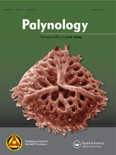
PALYNOLOGY
metrics 2024
Advancing Knowledge in Paleontology and Ecosystem Dynamics
Introduction
PALYNOLOGY, published by Taylor & Francis Inc in the United Kingdom, is a prominent academic journal focused on the field of paleontology, particularly the study of fossilized pollen and spores. Established in 1977, this journal continues to thrive, with comprehensive coverage of significant advancements and research findings in palynology, highlighting its integral role in understanding past ecosystems, climate changes, and evolutionary processes. With an impressive Scopus ranking of #34 out of 113 in the Earth and Planetary Sciences category, and a notable Q2 classification, PALYNOLOGY serves as a vital resource for researchers, professionals, and students committed to deepening their knowledge of paleontological studies. Although currently not Open Access, the journal remains dedicated to delivering valuable insights and fostering scholarly communication in the field, making it an essential read for anyone invested in the complexities of Earth’s biological history.
Metrics 2024
 0.51
0.51 1.40
1.40 1.60
1.60 38
38Metrics History
Rank 2024
Scopus
IF (Web Of Science)
JCI (Web Of Science)
Quartile History
Similar Journals

BULLETIN OF GEOSCIENCES
Unveiling the Secrets of Earth’s Processes and EnvironmentsBULLETIN OF GEOSCIENCES, published by the prestigious Czech Geological Survey, stands as a pivotal resource in the fields of Earth and Planetary Sciences and Environmental Science. Since its inception in 2003, the journal has been committed to advancing knowledge through high-quality research, currently holding a commendable Q2 ranking in both disciplines. With its focus on diverse and innovative topics, BULLETIN OF GEOSCIENCES provides an essential platform for researchers, professionals, and students aiming to disseminate and access impactful studies. The journal is indexed in Scopus, ranking #78/195 in General Earth and Planetary Sciences and #110/233 in General Environmental Science, reflecting its significant contribution to academia. Publishing from Prague, Czech Republic, this journal invites contributions that illuminate the interactions between geological processes and environmental phenomena, ensuring an inclusive and accessible approach to crucial global issues.
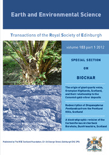
Earth and Environmental Science Transactions of the Royal Society of Edinburgh
Exploring the intricate connections of Earth and environment.Earth and Environmental Science Transactions of the Royal Society of Edinburgh is a prestigious journal published by Cambridge University Press, dedicated to advancing research in the field of Earth and planetary sciences, as well as environmental science. With its ISSN 1755-6910 and E-ISSN 1755-6929, the journal has established itself as a crucial platform for disseminating innovative research and comprehensive reviews since its inception in 2007. Positioned in the Q3 quartile for both Earth and Planetary Sciences and Environmental Science, it contributes significantly to the ongoing dialogue and development in these areas, boasting a Scopus ranking that reflects its commitment to scholarly excellence with an emphasis on interdisciplinary approaches and real-world applications. The journal is based in the United Kingdom, with its editorial office located at the Edinburgh Building, Shaftesbury Road, Cambridge. As an essential resource for researchers, professionals, and students alike, Earth and Environmental Science Transactions offers opportunities for open discourse on pressing environmental challenges, fortifying its role in fostering a deeper understanding of our planet's systems and their interconnectedness.
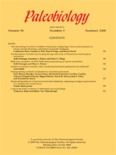
PALEOBIOLOGY
Pioneering Research in the Evolution of LifePALEOBIOLOGY, published by Cambridge University Press, is a premier, peer-reviewed journal that stands at the forefront of research in paleontological sciences. With a robust commitment to advancing the study of the interactions between ancient life forms and their environments, the journal has established itself as a vital resource for researchers, professionals, and students in the fields of paleontology, ecology, and evolutionary biology. Spanning from 1975 to 2024, it boasts an impressive Q1 ranking in several categories, including Agricultural and Biological Sciences, Ecology, and Paleontology, indicative of its high impact and relevance in shaping contemporary scientific discourse. While the journal is not open access, it offers a variety of subscription and access options, ensuring broad distribution and visibility of published research. As a leader in its discipline, PALEOBIOLOGY aims to facilitate a deeper understanding of our planet's biological history, making it an essential publication for anyone interested in the dynamics of life across geological time.
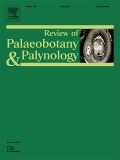
REVIEW OF PALAEOBOTANY AND PALYNOLOGY
Charting the Evolutionary Journey of FloraREVIEW OF PALAEOBOTANY AND PALYNOLOGY, published by Elsevier, stands at the forefront of research in the fields of paleobotany and palynology. Since its inception in 1967, this esteemed journal has provided a vital platform for disseminating cutting-edge findings and comprehensive reviews that explore the intricate relationships between plant evolution, fossil records, and environmental changes. With its impressive categorization, being ranked Q1 in Paleontology and Q2 in Ecology, Evolution, Behavior and Systematics, it is recognized as a leading outlet for scholars, boasting a notable impact factor that underscores its influence within the academic community. Based in the Netherlands, the journal features a diverse range of open access options, although subscription models are also available, making it accessible to a broad audience of researchers, professionals, and students eager to delve into the complex histories of plant life. The REVIEW OF PALAEOBOTANY AND PALYNOLOGY not only champions original research but is also committed to enhancing interdisciplinary dialogue, thereby playing a crucial role in advancing our understanding of Earth's biological heritage from an evolutionary perspective.
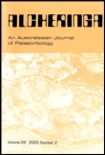
ALCHERINGA
Connecting Researchers to the Pulse of Nature's HistoryALCHERINGA, published by Taylor & Francis Ltd, is a distinguished academic journal that has been at the forefront of research in the fields of ecology, evolution, behavior, systematics, and paleontology since its inception in 1975. With an ISSN of 0311-5518 and E-ISSN 1752-0754, this journal serves as a critical platform for the dissemination of high-quality research, contributing significantly to the understanding of biological and geological sciences. Ranking in the Q3 quartile for both Ecology, Evolution, Behavior and Systematics, as well as Paleontology, ALCHERINGA is well-positioned within the academic community, attracting submissions from researchers across the globe. The journal's Scopus ranks further highlight its relevance, particularly its position in the 51st percentile for Ecology and the 50th percentile for Paleontology. Although it does not operate under an open access model, ALCHERINGA remains committed to providing valuable insights and fostering discussions that are essential for the advancement of these vital scientific disciplines. Researchers, professionals, and students are encouraged to explore the profound implications of the studies published within, making it an indispensable resource for anyone aiming to deepen their expertise in these fields.

AEROBIOLOGIA
Advancing Knowledge in Immunology, Allergy, and Plant ScienceAEROBIOLOGIA is an esteemed journal published by SPRINGER, dedicated to the dynamic fields of Immunology, Allergy, and Plant Science. With a history of scholarly contributions dating back to 1985, this journal serves as a critical platform for researchers and professionals to share advancements and findings in the understanding of airborne biological particles and their implications on health and biodiversity. As evidenced by its Q2 and Q3 quartile rankings in various categories as of 2023, AEROBIOLOGIA holds a significant position within the academic community, particularly in the realms of Agricultural and Biological Sciences. The journal encourages high-quality submissions and remains committed to fostering innovation and collaboration among scientists dedicated to the exploration of aerobiological phenomena. While it is not an open-access publication, its rich repository of research is crucial for academia and industry practitioners alike, facilitating essential insights into ecological interactions and immunological responses.
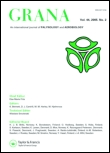
GRANA
Pioneering Research in the Heart of Ecology and BotanyGRANA is a prestigious peer-reviewed journal published by Taylor & Francis AS, dedicated to advancing the field of Ecology and Plant Science. With a history dating back to the early 1970s and continuing through to 2024, GRANA serves as a critical platform for researchers and professionals exploring the intricate relationships within plant communities, ecological dynamics, and evolutionary processes. Despite its Q3 quartile ranking in both Ecology, Evolution, Behavior and Systematics and Plant Science, it stands out for its rigorous publication standards and relevance in the scientific community. The journal holds a rank of #283/516 in Plant Science and #410/721 in Ecology, reflecting its commitment to producing impactful research. Although it currently does not offer an open access model, GRANA provides vital insights that are indispensable for academics, practitioners, and students eager to deepen their understanding of ecological and botanical sciences.

PALEONTOLOGICAL JOURNAL
Bridging the Gap Between Past and Present.The PALEONTOLOGICAL JOURNAL, published by PLEIADES PUBLISHING INC, is a premier platform for the dissemination of research in the field of paleontology. With an ISSN of 0031-0301 and E-ISSN 1555-6174, this journal serves the academic community by providing insights into fossil studies, evolutionary biology, and the historical narrative of life on Earth. Despite being categorized in the Q3 quartile for 2023 and currently holding a Scopus rank of #84 out of 113 in the Earth and Planetary Sciences- Paleontology category, it remains a valuable resource for researchers and practitioners. The journal's coverage spans from 1990 to 2024, offering a comprehensive historical perspective while also addressing contemporary issues in paleological research. Scholars and students alike benefit from its rigorous peer-reviewed articles and the opportunity to access vital knowledge in the ever-evolving field of paleontology.
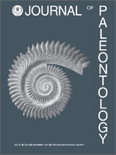
JOURNAL OF PALEONTOLOGY
Advancing Knowledge in Fossil StudiesJOURNAL OF PALEONTOLOGY, published by Cambridge University Press, is a leading scholarly journal dedicated to the field of paleontology, featuring a broad scope that covers fossil studies, evolutionary biology, and earth history. With an ISSN of 0022-3360 and an E-ISSN of 1937-2337, this esteemed journal serves as an essential platform for researchers, professionals, and students to disseminate cutting-edge research findings and insights in paleontological science. The journal holds a significant position within its category, ranking Q2 in the 2023 quartiles and achieving a Scopus rank of #51 out of 113 in Earth and Planetary Sciences – Paleontology, placing it in the 55th percentile of its field. Although it does not currently offer open access options, JOURNAL OF PALEONTOLOGY has been a critical contributor to advancing knowledge from its inception in 1979 through to 2024. Its dedication to rigorous research ensures it remains an indispensable resource for those vested in the understanding of ancient life and ecosystems.
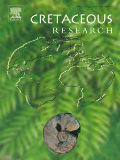
CRETACEOUS RESEARCH
Illuminating the Cretaceous Period's Rich TapestryCRETACEOUS RESEARCH, published by Academic Press Ltd - Elsevier Science Ltd, is a leading journal in the field of Paleontology that has established itself as an essential resource for researchers and professionals delving into the rich tapestry of the Cretaceous period. With its ISSN 0195-6671 and E-ISSN 1095-998X, this journal boasts a prestigious placement in the academic landscape, holding a Q1 rank in the 2023 Paleontology category and proudly positioned at 21st out of 113 in the Scopus ranking, reflecting its impact factor that places it in the 81st percentile. Since its inception in 1980, CRETACEOUS RESEARCH has facilitated a deeper understanding of prehistoric life and its evolutionary processes, covering topics such as fossil discoveries, paleoecology, and biostratigraphy. This journal best serves those seeking to expand their knowledge and contribute innovative findings to the scientific discourse surrounding the Cretaceous era. As it continues to converge into the future until 2025, it remains dedicated to providing an open platform for the dissemination of high-quality research that shapes our understanding of Earth’s geological past.